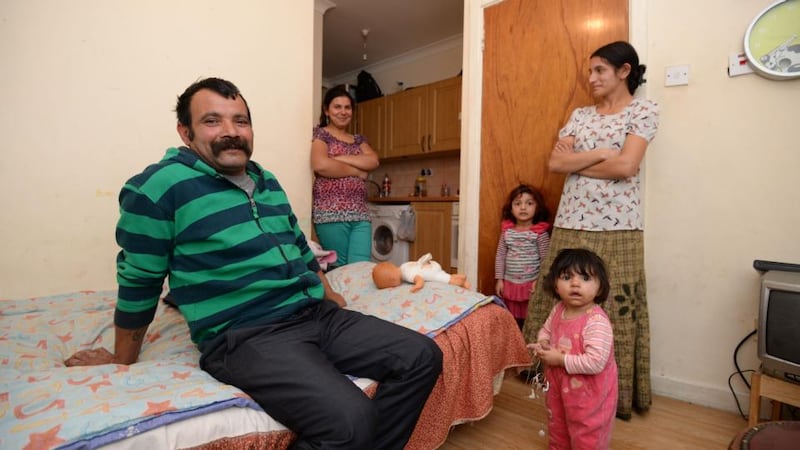The arrival of the International Monetary Fund (IMF) in Dublin on the evening of November 18th, 2010, confirmed the febrile rumours that the Irish Government was now so broke it would have to depend on the benevolence of strangers.
The rumours were confirmed the following morning when the IMF chief negotiator Ajaj Chopra and his team left the Merrion Hotel en route to the Central Bank.
Though billeted in one of the top hotels in Dublin, they displayed a degree of frugality sorely lacking in the State they were about to rescue by opting to walk.

The photographers and cameramen pursuing them got their shots as the IMF team left the hotel, but AP photographer Peter Morrison carried on down St Stephen's Green and noticed a beggar at the corner of Dawson Street leaning against a symbol of the Irish State, a green post box. "I knew it would tie in well with the story," recalled Mr Morrison.
The shot went around the world. It was, in effect, the €67 billion photograph.
But who was the man who came to symbolise the bankruptcy of the Irish State?
I went looking for him shortly after the bailout and found his old perch occupied by a young man who claimed to be the man’s nephew. He introduced me to a man on Baggot Street who grinned to suggest he was the person in the photograph, but he had no English.
Three years on, and this time with a native Romanian speaker, we again found the man through his nephew.
Anton Rostas (42), who says he is the beggar in the famous photograph, is a father-of-five from Tileagd, a village in the northwest of Romania.
Home is a small apartment in north-inner city Dublin.
It’s home to six people: Mr Rostas, his daughter Lamaita (20), her two children, aged four and eight months, along with her husband and uncle.
The rent is €30 a week, which has to be raised through begging. The family receive no social welfare payments, Mr Rostas says, not even child benefit. Rostas concedes it is hardly a satisfactory arrangement. “We don’t have another option. The rent is too expensive. It is very hard to find a place. The landlords are afraid to rent to us even if we pay them.”
Nevertheless, his daughter wants her children to grow up in Ireland. "It's a better environment," she says. "I want to put them in school here because I never had that chance. I was only in school for nine years."
Mr Rostas first came to Ireland in the summer of 2007, the year Romania joined the EU. He says he was “following the rumours”. Ireland had work, he heard, and the chance of a better life.
He also heard Irish people were more religious and, apparently, therefore kinder than Romanians. His initial sojourn did not last long. Within a week of arriving, he found himself caught up in the illegal encampment on the M50 near Ballymun in Dublin and was deported along with 60 other Roma.
The man who ordered the deportation was the then minister for justice Brian Lenihan; the same man who was forced to call in the IMF when he realised the State needed outside help.
Rostas returned four months later and says he has been living in Ireland on and off since. He spent time back in Romania when his mother and, more recently, his four- year-old daughter died. “She was very sick [his daughter]. God was willing to receive her. There was nothing we could do.”
When he first heard about the photograph, he feared it would be used against him by gardaí to lift him off the street. He remembers gardaí taking “homeless” signs away from beggars in the days around the bailout talks.
Before we leave, Rostas says he wants it to be known that people are “much kinder here in Ireland”.
A life on the streets, even in bailed out Ireland, remains preferable to a life on the streets in Romania.










